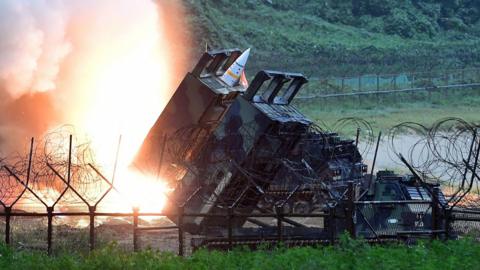The Biden administration had for months refused to authorise Ukraine to hit Russia with long-range missiles, fearing escalation of the conflict.
Vladimir Putin has warned against allowing Western weapons to be used to hit Russia, saying Moscow would view that as the “direct participation” of Nato countries in the war in Ukraine.
“It would substantially change the very essence, the nature of the conflict,” Putin said in September. “This will mean that Nato countries, the USA and European states, are fighting with Russia.”
Russia has set out “red lines” before. Some, including providing modern battle tanks and fighter jets to Ukraine, have since been crossed without triggering a direct war between Russia and Nato.
Kurt Volker, a former US ambassador to Nato, said: “By restricting the range of Ukraine’s use of American weapons, the US was unjustifiably imposing unilateral restrictions on Ukraine’s self-defence."
He added that the decision to limit the use of ATACMS was "completely arbitrary and done out of fear of ‘provoking’ Russia."
“However, it is a mistake to make such a change public, as it gives Russia advance notice of potential Ukrainian strikes.”


